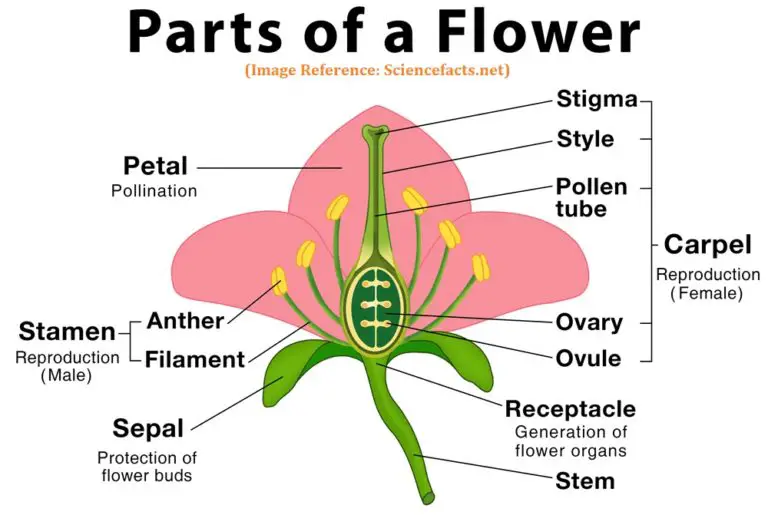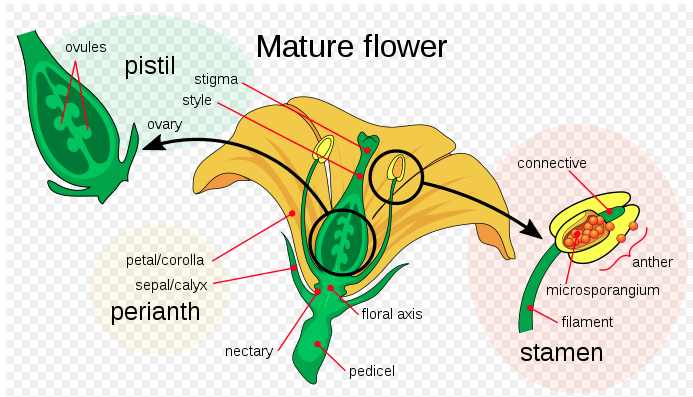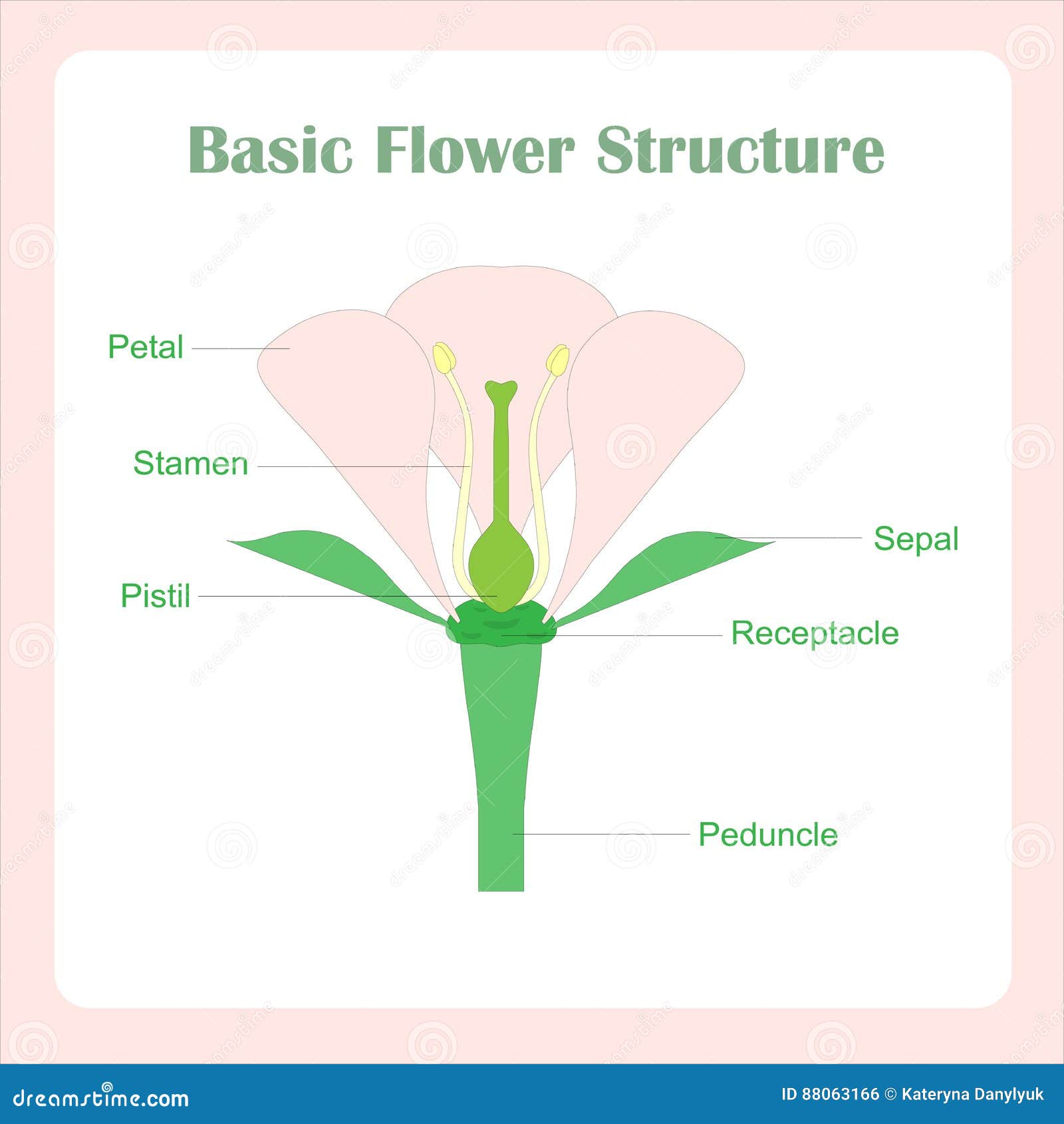42 flower diagram with labels and functions
Diagram of the Parts of a Flower | Sciencing Examine a flower diagram, and you'll see that flowers consist of several parts. All these flower parts each have a specific function that allows the flower to bloom and then eventually become fruit or seed. Petal Petals are the pretty part of the flower that gives it its shape and form. Petals come in a wide variety of colors. These may include: Biology Of Plants - Parts Of Plants, Diagram And Functions A stem carries out a number of functions essential for various processes such as photosynthesis. Provides a definite framework and structure to a plant which later develops into a tree. Support: Primary function of the stem is to hold up buds, flowers, leaves, and fruits to the plant. Along with the roots, a stem anchors the plants and helps ...
Label The Plants | Teaching Ideas The worksheet asks the children to label the different parts of the plant. The answers are as follows: Diagram 1 - 1) Leaf, 2) Stem, 3) Root, Diagram 2 - 4) Petals, 5) Pistil, 6) Filament, 7) Sepal, 8) Stem. When the children have done this, they are asked to write down the functions of the roots, stem, leaves and flowers.
Flower diagram with labels and functions
Flower Structure and Function | World of Flowering Plants It is generally bowling-pin-shaped and located in the center of the flower. Stigma - Receives pollen, typically flattened and sticky. Style - Connective tissues between stigma and ovary. Ovary - Contains ovules or embryo sacs. Ovules - Unfertilized, immature seeds. Parts of a Flower. Stamen - Male flower organ. Anthers - pollen ... Floral diagram - Wikipedia A floral diagram is a schematic cross-section through a young flower. [1] It may be also defined as "projection of the flower perpendicular to its axis". [3] It usually shows the number of floral parts, [Note 2] their sizes, relative positions and fusion. Parts of a Typical Flower (With Diagram) - Biology Discussion A typical angiosperm flower has following parts: 1. Bract (= Hypsophyll): It is a leaf like structure in whose axil a flower often develops. 2. Pedicel: It is the stalk of the flower which may be short, long or even absent. 3. Bracteoles:
Flower diagram with labels and functions. The Flower: Definition, Parts, Function, Diagram - Embibe Rafflesia arnoldii is a rare and the biggest flower in the world, usually found in the rainforest of Indonesia. 3. There is a rare flower named Neelakurinji that blooms once in \ (12\) years and is found in India. 4. Similarly, there is a plant known as the century plant or Agave americana as its flower blooms once in \ (100\) years. 5. Parts of a Flower | Plant Game | Turtle Diary Identify and label figures in Turtle Diary's fun online game, Parts of a Flower Labeling! Drag given words to the correct blanks to complete the labeling! Parts Of A Flower Identified & Explained: Diagram & Photos Its function is to protect the inner parts of the flower during the bud stage. Petal Working inwards, the next whorl after the sepals / calyx consists of the flower's petals. The main function of petals is to attract pollinators - animals that transfer pollen from flower to flower. For this reason, a flower's petals are often brightly-colored. Parts of Flower (With Diagram) & Functions of Floral Members (1) The function of corolla is to attract insects i.e. the function of flag apparatus. (2) In some cases the bases of petals act as secreting of nectar owing to the presence of glands. (3) Secondary function of corolla is protection of the essential members. ANDROECIUM
Parts of a Flower and Their Functions (With Diagram) The four main parts of a flower are the petals, sepals, stamen, and carpel (sometimes known as a pistil). If a flower has all four of these key parts, it is considered to be a complete flower. If any one of these elements is missing, it is an incomplete flower. Complete Rose Hibiscus Tulip Incomplete Holly Corn Squash Grasses Perfect vs. Imperfect Plant Cell Wall- Definition, Structure, Functions, Diagram Functions of plant cell wall It provides mechanical support as the skeletal framework in the plant. It protects the inner components of the cell from mechanical injuries. It is permeable to the water and solutes. It is the presence of the water-filled channels which allows the free diffusion of water and water-soluble substances. Flower structure diagram / RHS Campaign for School Gardening You can use the image below as a worksheet for your students to label the different parts. Next steps: Why not look at the different parts of a whole plant to help with understanding structure and function. Look for differences in a variety of plants. Labeled Plant Cell With Diagrams | Science Trends Examining a diagram of the plant cell will help make the differences clearer. Let's go over the individual components of plant cells listed on a diagram such as the one above, and explore the roles that each of the organelles has. This will give us some insight into how plant cells differ from animal cells. The parts of a plant cell include ...
Parts of a Plant and Their Functions (With Diagram) Stems. The stem is the central part of the plant. It is the midsection between the roots and the leaves or flowers, and its main function is to carry moisture and nutrients from the roots to the rest of the plant. There are different types of cells within the stem that perform their own functions. The xylem cells transport water from root to ... Parts of Flower and Plant (Pistil, Sepal, Stamen and More) - Diagrams ... Parts of a Flower (Diagram of Flower Anatomy With Labels) Pistil (The Female Part of the Flower) The pistil functions as the female reproductive part of the flower that comprises of the stigma, style, and ovary. Sometimes the term carpel is used in place of pistil. In some cases, a carpel and pistil are one and the same thing. A Labeled Diagram of the Plant Cell and Functions of its Organelles Its functions include, isolating materials harmful to the cell, maintaining turgor within the cell and exporting unwanted materials away from the cell. Function: Regulates internal environment. You can save and print this diagram of the plant cell. It will help you with your revision. That's about how the organelles in a cell function. 17 Parts of a Flower And Their Functions (With Labelled Diagram) 17 Parts of a Flower And Their Functions (With Labelled Diagram) May 22, 2021 by Solomon Shibairo Overview A typical flower has four main parts or whorls referred to as the calyx, corolla, androecium, and gynoecium. The outermost whorl of the flower has green, leafy structures known as sepals.
The Parts Of A Flower With Diagrams | Science Trends The parts of a flower can be broken up into the pistil (stigma, style, and ovary) and stamen (anther and filament), flower petals, sepal, ovule, receptacle, and stalk. Below we'll get into what each part does and include some great flower diagrams to help you learn.
Parts of Flower Diagram: Structure of Flower, Functions - Embibe The flower is the reproductive part of the plant. They are found in flowering plants. The main function of flowers is to reproduce by the process of pollination. There are two types of pollination i.e., self-pollination and cross-pollination. Self-pollination occurs when pollen from the anther is deposited in the stigma of the same flower.
Structure of Flower (With Diagrams) | Botany The flower consists of an axis, also known as receptacle and lateral appendages. The appendages are known as floral parts or floral organs. They are sterile and reproductive. The sepals and petals which constitute the calyx and corolla respectively are the sterile parts.
Parts Of A Flower And Its Functions - Byju's Functions of a Flower The important functions of flowers are mentioned below: Gametophytes develop in the flowers. The flowers can produce diaspores without fertilization. After fertilization, the ovary of the flower develops into a fruit containing a seed. The most important function of flowers is reproduction.
Parts of a Flower: An Illustrated Guide | AMNH Peduncle: The stalk of a flower. Receptacle: The part of a flower stalk where the parts of the flower are attached. Sepal: The outer parts of the flower (often green and leaf-like) that enclose a developing bud. Petal: The parts of a flower that are often conspicuously colored. Stamen: The pollen producing part of a flower, usually with a slender filament supporting the anther.

Environmental Science (EVS) Worksheet: Flower parts and functions (With PDF) – Practice Worksheet
Flower Parts Diagram Worksheet Teaching Resources | TpT With this printable worksheet, students will Label the Parts of a Flower Diagram. You will download the pdf and print the worksheet for a fun activity for your students. They will learn about the parts of a flower including the roots, stem, leaves and flower. I use this with my special education students who have moderate to severe autism.
Perfect Flowers Diagram & Examples | What Is a Perfect Flower? - Video ... Perfect Flower Diagram Below is a diagram of a flower. This is a simple flower diagram showing a labeled flower. Notice that this is a perfect flower diagram, as it has both the male and female...
Post-It Labels for the Parts of a Flower - Pinterest This week's learning theme is plants. We got lots of rain last week and tons of flowers as a result. Today we decided to dissect a flower. We didn't. Parts of a Plant Coloring sheet - tape or glue parts to the sheet as you examine it. W10. A diagram of a seed. First, I need to admit that I traced this image.
Four Whorls: The Parts of a Flower and Their Functions At the center of the flower is the fourth whorl - the carpels, which contain the pistil of the flower. The pistil is the plant's female reproductive organ, which is composed of three parts: the ovary, the style, and the stigma. The ovary contains the eggs, or ovules, of the plant, and when the ovules are fertilized, the ovary sometimes ...
PDF Parts of a Flower - UGA 3. Introduce flower structure. Refer children to the flower diagram chart. Explain that each flower is unique with its own special beauty. While flowers are composed of the same Location: classroom with tables for children to work in small groups Objectives: Learners will 1) identify the different parts of a flower and understand their function.
Parts of a Typical Flower (With Diagram) - Biology Discussion A typical angiosperm flower has following parts: 1. Bract (= Hypsophyll): It is a leaf like structure in whose axil a flower often develops. 2. Pedicel: It is the stalk of the flower which may be short, long or even absent. 3. Bracteoles:
Floral diagram - Wikipedia A floral diagram is a schematic cross-section through a young flower. [1] It may be also defined as "projection of the flower perpendicular to its axis". [3] It usually shows the number of floral parts, [Note 2] their sizes, relative positions and fusion.
Flower Structure and Function | World of Flowering Plants It is generally bowling-pin-shaped and located in the center of the flower. Stigma - Receives pollen, typically flattened and sticky. Style - Connective tissues between stigma and ovary. Ovary - Contains ovules or embryo sacs. Ovules - Unfertilized, immature seeds. Parts of a Flower. Stamen - Male flower organ. Anthers - pollen ...














Post a Comment for "42 flower diagram with labels and functions"